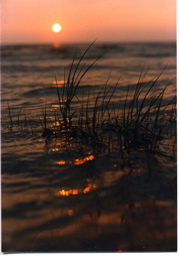 A partnership of states and agencies trying to restore the health of the Chesapeake Bay said that bay grasses increased 12 percent last year, a sign that pollution control efforts are working.
A partnership of states and agencies trying to restore the health of the Chesapeake Bay said that bay grasses increased 12 percent last year, a sign that pollution control efforts are working.
The total area of underwater bay grasses was the highest baywide acreage since 2002, said the Chesapeake Bay Program Tuesday.
Bay grasses are an excellent measure of the Bay’s overall condition because they are not under harvest pressure and their health is closely linked to water quality.
The submerged vegetation is critical to the Bay ecosystem because it provides habitat and nursery grounds for fish and blue crabs, serves as food for turtles and waterfowl, clears excess nutrients and reduces shoreline erosion.
Grasses increased in all three of the Bay’s geographic zones – upper, middle and lower – for just the second time since 2001.
“Many of the Bay’s lower salinity areas are doing well and seem to be driven by reductions in nutrient pollution entering the Bay,” said Lee Karrh, living resources assessment chief with the Maryland Department of Natural Resources.
Pollution control efforts include upgrades to wastewater treatment plants and improvement in agricultural management practices. The results are encouraging, especially in the upper bay where grasses last year covered nearly 24,000 acres, almost reaching the target goal.
Citizens who live in the Bay’s watershed can do their part by reducing their use of lawn fertilizers, which contribute excess nutrients to local waterways and the Bay.




















Thank you for this story! I needed to hear some good environmental news after hearing for the past week about the oil spill in the Gulf of Mexico.